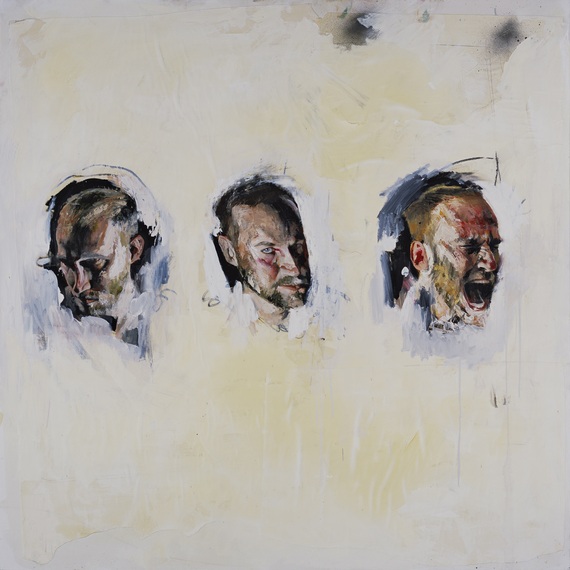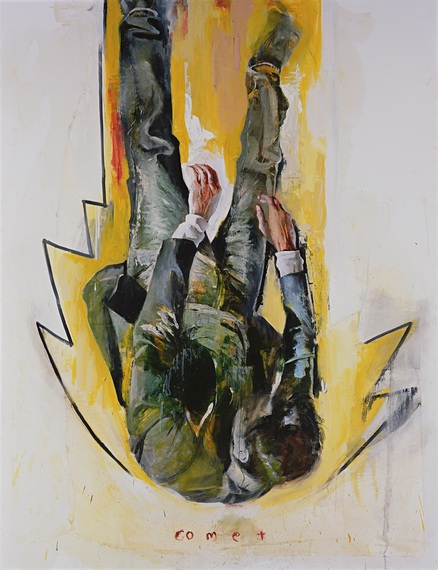First be a magnificent artist and then you can do whatever.
-- Francisco de Goya
The filigree of tight lace panties, the flush of bright red ears, the architecture of a long and heavy braid, the tethered hovering of a strange blue square, the intervention across limbs of scratched red rubbings, the gathering of opaque clouds of dirty, prismatic white -- across all surfaces, but especially the flesh, Jason Shawn Alexander unleashes a veritable riot of pigment. The skin of his subjects glows like embers, radiating heat and light like bruised stained glass. Emerald, indigo, magenta, crimson, azure, amber, blood orange and ash grasp and grip each other, barely remaining within the confines of imagery. Alexander's deployment of color is uncoupled from an aspiration to naturalism. His compositions often depict three or more figures, each rendered in a different style; sometimes more than one style of representation exists within a single figure. Furthermore, both the pictorial space and the figures are in perpetual danger of dissolving back into the same tempest of total abstraction from which they emerge. Not one figure in the series is fully rendered, but neither is anything missing. "Whatever is important in each picture is treated with focus," he explains. And that is not always the whole person. It might be a hand, or eyes, a face, or maybe arms, or a back; or the place where two people touch but not the rest of their bodies, which might end up having more in common with the backgrounds than with each other. That's fine with the artist -- because the contents of his scenarios aren't really the content of his paintings.
Richard Diebenkorn said, "One wants to see the artifice of the thing as well as the subject." And Alexander thinks about Diebenkorn a lot -- specifically about how Diebenkorn's figures and landscapes are often interrupted or left substantially unrendered, being not narrative cues, but spatial premises for people to relate to the optical and psychological content of the painting -- both the act and the object. Like Alexander, Diebenkorn's abiding interest is the dynamic of abstraction. Yet Alexander remains committed to the human figure, in part because he enjoys the emotional trigger, and in part because he just really loves to draw, especially the body. Fundamentally, the story of No Good At Exits is about finding the balance and synthesis between the competing impulses of abstraction and narrative. Though perhaps an unlikely cohort for Diebenkorn, it is Goya that inspires much of the exotic, allegorical, dark, sexually charged energy resplendent in many of the compositions. One monumental work in the series for example is essentially Alexander's own version of The Fates. But all the work is tinged with that same power and mystery. Making evocative eye-contact or deliberately turning away, exuding sensual complexity and a cheeky voyeurism, the figures are quite without shame or self-consciousness. At times, they are even a little puckish and cinematically noir -- and they do serious subversion to the the gender paradigm of the art historical nude.
But for all that, Alexander insists he is working not on storyline, but on instinct, saying, "I know what it feels like, but not what it means. That is for the viewer to decide."
JASON SHAWN ALEXANDER: NO GOOD AT EXITS opens April 5, 2014 at Hollywood's 101/Exhibit, with a public reception on Saturday evening, and remains on view through May 24.




